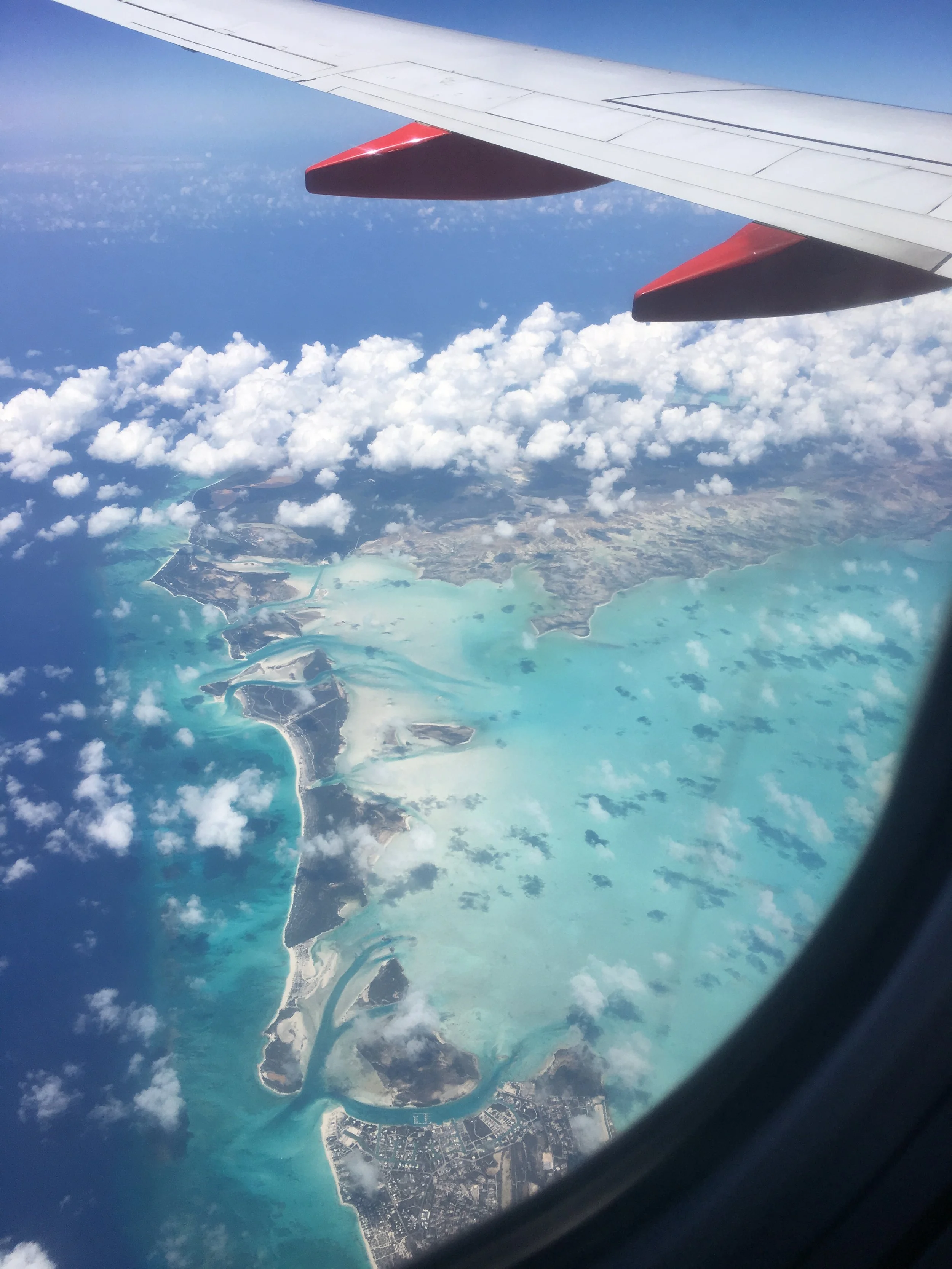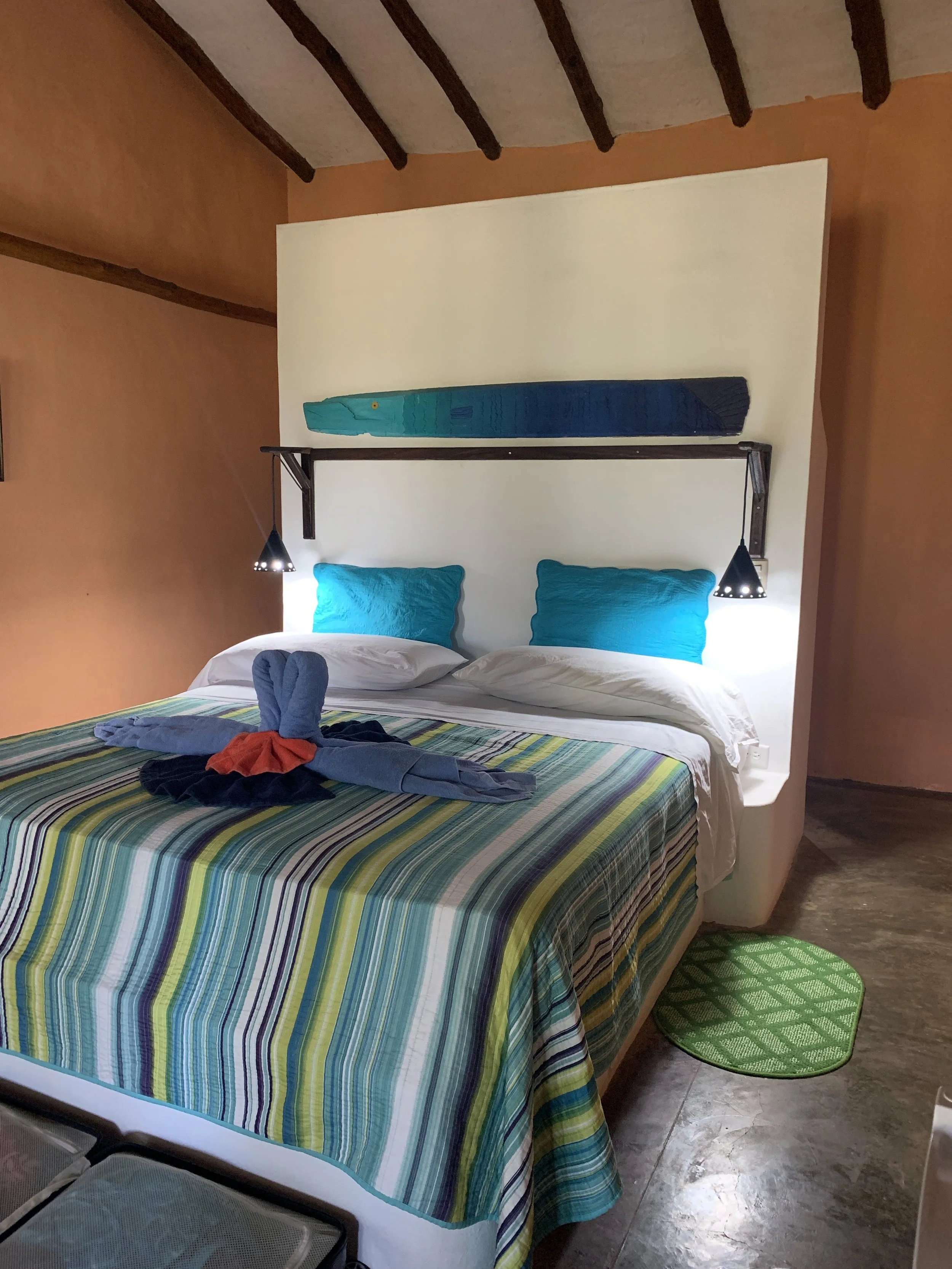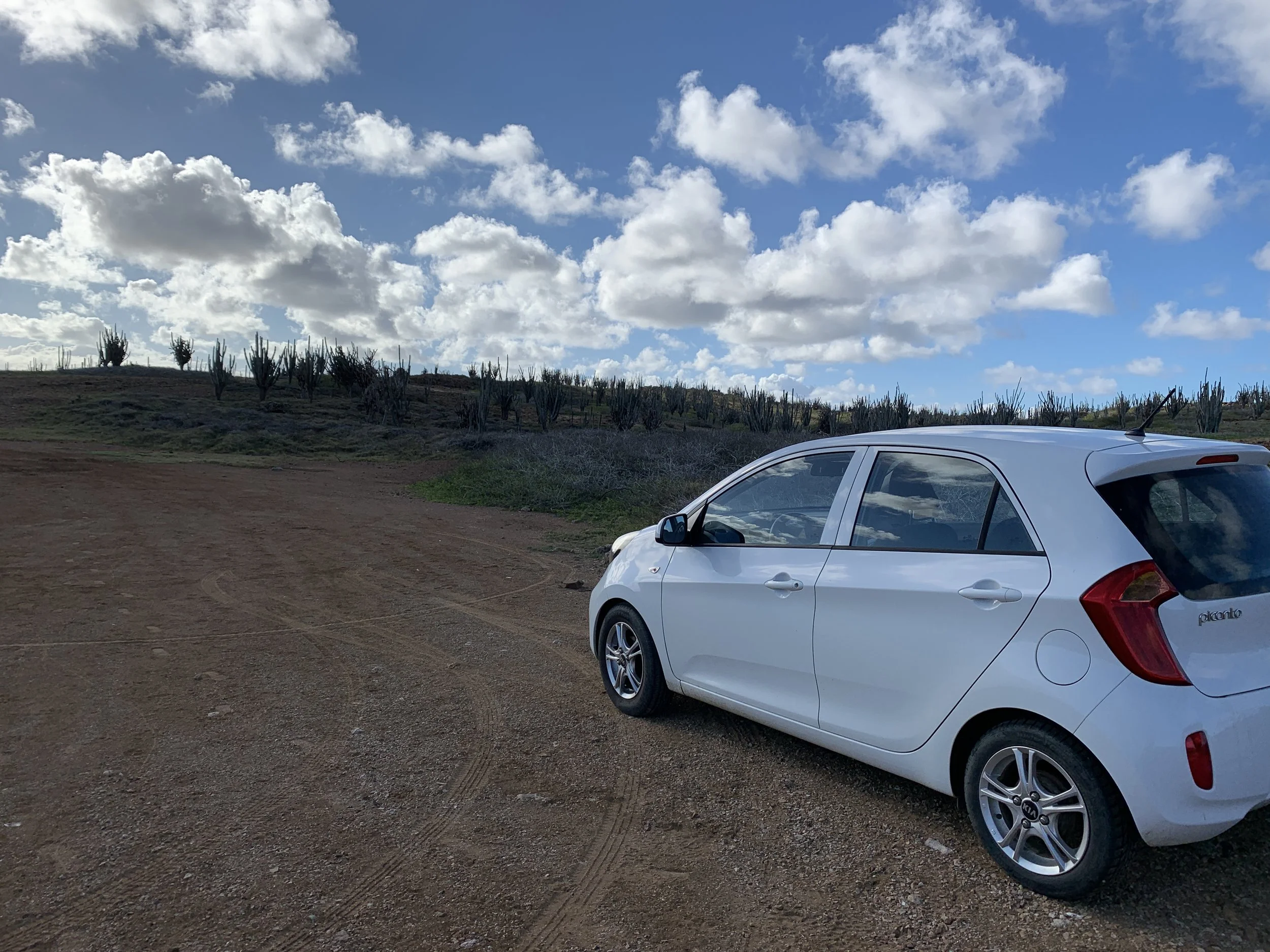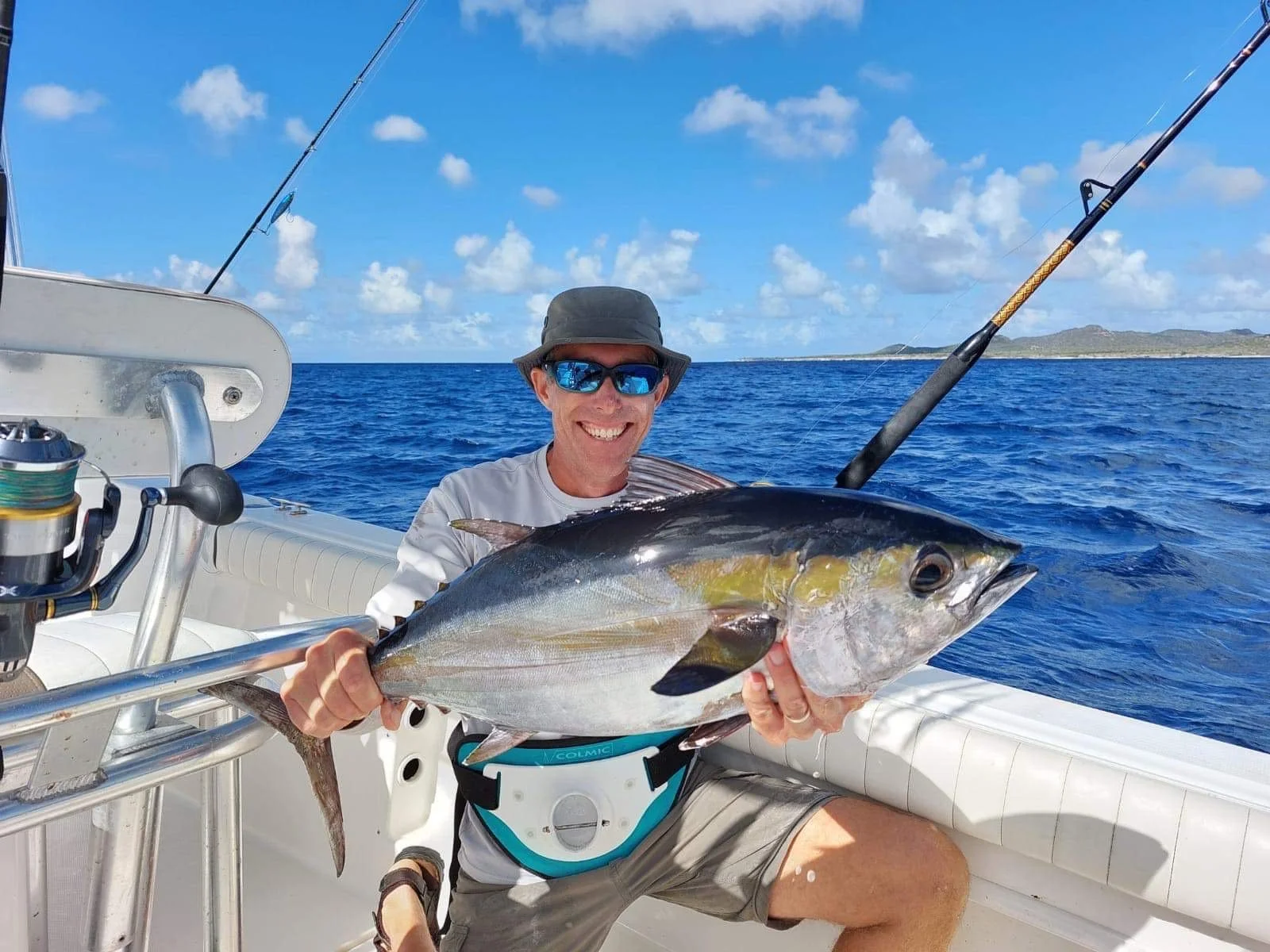How We Save Money on Travel
What Do You Spend on Travel?
These days, the way we travel is cheaper than how we used to vacation when we only had one or two weeks to “do it all” and then return to work. Since we are now slow-traveling and doing long hikes, we spend a lot less, typically between $100 and $150 per day. This includes airfare, transportation and lodging, and specialty dining. For six months of travel, this adds up to roughly $25,000 per year.
By choosing a global health insurance plan and staying outside the US for at least six months per year, we save about $10,000 per year on health insurance premiums. Therefore, our six months of international travel costs us a net of about $15,000 per year above what our expected living costs would be if we were to “stay home” in the US all year.
In this article, we share our travel philosophy and our best hacks for saving money and staying within our budget when we travel.
About Us
Darren and I are early retirees who left corporate careers in our late 40s. We are nomadic except for three months a year when we spend time in our tiny home in the Great Plains of the United States.
We spend 40 - 120 days per year thru-hiking in the EU and about 90 days per year in the Caribbean and Central America. This blog documents our journey to nomadic living and financial independence and the adjustments we’ve made to make the lifestyle work.
Our website is ad-free; however, we use Amazon affiliate links for some of our recommendations. We make a small affiliate commission whenever you use these links at no additional cost.
Thanks for supporting our little blog!
What Is Your Travel Philosophy?
Here are a few notes about our travel philosophy after two years on the road.
We don’t compromise on safety to save money.
We keep a running list of places we want to go to and a shorter list of places to return to.
We don’t complain about costs or compare costs to “what it costs in the US.”
We don’t pet-sit to save on lodging costs. We like animals, but since we have allergies, we try to avoid places that accept pets.
We don’t go to places just because accommodations are on sale.
We enjoy eating at good restaurants, but we also find cooking fun and generally healthier, so we do both while traveling.
Slow travel is MUCH more relaxing than fast travel.
With these ideas in mind, we try to make the most of our travel budget. Here are some ways we do that.
We No Longer Take Vacations
We finally built a life that we don’t need to escape from. We now plan our travels, where and when we want to go, and how long we want to stay. Of course, we must adhere to visa limits, but since we love outdoor activities, we mostly plan our travel based on the seasons and destinations.
Travel Before Early Retirement
We, like many other Americans, were taking expensive weekend trips to the beach to “get away” from intense careers.
We overspent to visit family during the busy holidays because all the commercials and social expectations told us it was essential to visit on those very specific (and expensive) days. We’d spend $2,000 per holiday weekend as visiting our families meant flying in peak season, whereas a week or two earlier would have been half the cost.
On top of that, we’d spend our two weeks' remaining vacation during the winter in the Caribbean—at the same time everyone else wanted to be there. We’d stay in modest short-term accommodations like VRBO, and those trips easily cost $4,000 for two weeks. Later we found that we could have gotten the same place for $3,000 for the entire month if we had a month of vacation available!
Travel In Early Retirement
We now seldom do short-term travel and weekend trips to “get away from it all.” We prefer longer stays and slow travel for several reasons, one of which is that lodging is less expensive. When not thru-hiking, we prefer to spend 1-3 months in a single location.
Now that our free time is no longer limited to weekends, company holidays, and vacation days, we have much more flexibility when we travel to see family. Rather than flying on the same days as so many other people, we can choose to travel a few days earlier or later, avoiding the peak crowds and most expensive days. Heck, we can also choose to celebrate the holiday at another time. Who says you can’t observe Christmas in early December? Since our families are within driving distance of our farm in Kansas, we also have the option of driving rather than flying and renting a car once we arrive.
Our Top Travel Hack! Book Ahead to Save
We plan our travel around a few trips each year: one or two long thru-hikes per year (up to 60 days of hiking each) and one stay in a warm place, like the Caribbean, during the winter. Therefore, we plan our travels pretty far in advance, generally about one year ahead. This is quite a bit further ahead than a lot of other nomads.
Saving on Flights
We book primarily through Delta as Jolene is a Delta Million Miler and has been Diamond or Platinum status since 2011. We use Delta points to book flights, and we tend to book between 330 and 180 days in advance.
After a flight is booked, we continue to monitor the flight on Google Flights with automated email alerts. If the flight price goes down over $250, we call Delta for credit. We use Delta status to upgrade to Delta Comfort+ for free. As we’re flying only a few times per year, we can also use regional and global upgrades for business class on some flights.
Accommodations
We book accommodations in advance, often six months or more. We are able to find just the kind of places we want to stay in, near grocery stores, markets, and public transportation.
Transportation
By booking in advance, we can plan to make our connections by foot, bus, train, or rented car.
We Use Two Travel Rewards Programs and Credit Card Points
We pay off our credit cards monthly, so we don’t need to worry about incurring the high fees associated with these cards. If you have credit card debt, we don’t recommend using credit cards to accumulate points or miles.
The three credit cards we use all have annual fees, so in addition to accumulating points and redeeming them for miles or stays, the cards have benefits like travel interruption insurance and no international fees. We’ve found that in planning, we save a significant amount on travel, so we don’t feel the need also to do endless credit card hacking, and we appreciate the simplicity of only managing three cards.
American Express Platinum Delta
This is our go-to card. Delta is our airline of choice partly because of our status with them and because they fly to airports near our families (MCI, COS, DEN). By using the Platinum Delta card, we accumulate points on our card for regular spending in the US.
Purchases on this card earn one flight mile per dollar spent. We get 3X points on hotels and Delta flights and 2X on dining and groceries in the US. We redeem these points for flights and seat upgrades.
The downside of American Express cards is that they are rarely accepted outside of the US, and for that reason, we use a Mastercard overseas.
IHG Rewards Club Mastercard
Outside the US, this is our main credit card.
Like the American Express Card, we accumulate one point per dollar spent on the IHG Rewards Credit Card. The card also runs promotions like 10X points on spending at IHG properties.
Holiday Inn and Holiday Inn Express properties are typically near the airports we stay, so we often redeem our points to stay in these hotels before or after flights.
Chase Ink
We use a Chase Ink Business Card. We redeem the accumulated points on electronics, not travel.
ATM Card
We use a Charles Schwab ATM card for all ATM withdrawals because ATM fees incurred worldwide are refunded to us at the end of the month. When taking an ATM withdrawal, we decline any currency conversion fees at the ATM.
We Use Budget-Friendly Accommodations
Mid-Tier Room in Panama
We try to keep our travel accommodations to an average of $80 per night, although they will typically range from $40 to $200 per night.
We try to book the accommodations directly and pay with cash, wire, or PayPal. That way, we avoid most third-party fees, which are 6% or more. When we can do this, it benefits both the host and us. If a credit card is required, we use one of our existing credit cards and then accumulate points or miles.
Sometimes we find a discount code or coupon through Honey. However, the savings needs to be $10 or more per night. Otherwise, it is not worth the hassle.
We Travel to Rural Areas
Our favorite part of visiting big cities is the opportunity to connect via train or bus to a smaller town. My favorite part of Paris is the train station at CDG airport, where you can depart Paris and access rural France.
Smaller cities and villages are cheaper because the cost of living in them is typically lower than in big cities. This includes cheaper lodging, food, and transportation. It’s less expensive as there are fewer amenities that residents need to support with tax money. There are also fewer tourists competing for lodging in rural areas.
In rural areas, you’re more likely to find accommodations that cost less than half of what you’d find in the city. These accommodations are likely family or small-business-owned, so you’ll increase the likelihood of getting to know locals, especially if you are slow-traveling.
Rural areas also tend to have less expensive food and be quieter. However, understand that 3 am party music in the city may be replaced with a 4 am wake-up call by a noisy rooster!
Rural accommodations tend to have larger rooms, coffee machines, and other accessories like a microwave or refrigerator, enabling you to eat a low-cost meal sourced from a market or grocery store.
If your heart is set on visiting a big, expensive city to check out monuments, museums, and events, consider selecting lodging in a suburban location with an excellent bus or train connection to downtown.
Book Mid-Tier Accommodations
Since we mostly stay in rural areas, often untouched by chain hotels, the travel hacking schemes many travel bloggers employ don’t work for us.
While getting the “cheapest room possible” might have been our goal in our 20s, we’re inching past the age 50 mark, so some creature comforts, like a comfortable bed, free coffee, a shower, and free Wifi, are more appreciated than they used to be.
Mid-tier accommodations exist between the most basic hotel and luxury hotels. They are often located in places frequented by business travelers and tourists. They are often located near shopping centers, markets, and grocery stores. Unlike luxury hotels, which may have a great view of an area’s tourist attraction or the beach, mid-tier accommodations exist a short walk or ride away from the big attraction.
Mid-level accommodations also often have local charm and decor. They are not trying to look like every other cheap large-chain hotel. They often have a sense of place, frequently lacking in luxury resorts or hotels that look the same wherever you go.
In our experience, mid-tier accommodations give more personal attention than budget accommodations because there is a smaller staff-to-customer ratio (meaning more staff available to assist you).
We Travel in the Shoulder Season
We avoid traveling when everyone else is vacationing.
During the peak vacation season (usually summer months), we work on our farm and our tiny house and visit nearby family and friends. Traveling during the peak period is expensive, loud, and stressful.
Some examples of traveling during the shoulder season include:
Netherlands/Belgium/Germany/Switzerland in March/April/May
Portugal/Spain/France in October/November
Iceland in late April/May
Canada in May and September
We estimate we save between $1,000 and $5,000 per year on lodging by avoiding peak travel season. Add on savings of over $1,000 per year by choosing to fly internationally during the week instead of Fridays and weekends when most business people and holiday travelers are traveling.
We Pay Attention to Currency and Travel Trends
We check our destination list to see if any currency trends can yield savings of 10% or more.
In 2022, thanks to the strong dollar, the Euro was on par with the dollar. Most of the Schengen zone was, in essence, 20% off for Americans that year.
We booked all our flights for 2023 in 2022, as we saw the pent-up demand post-Covid for travel.
We Save on Transportation
Walking
We save about $4,000 annually by not renting cars nor driving our automobile for four months of the year.
Renting Cars From Individuals, Not Car Rental Chains
Rental car, rented from locals in Bonaire
When we rent cars for any rental of more than a week, we rent a car from locals with cash instead of through big multinational car rental companies. To get these local deals, check with your accommodations host.
If we can’t get a car rental from a local, we use Auto Slash to save on car rentals from the big chains and their smaller competitors.
By renting from locals and non-chain car rentals, we save over $2,000 per year on car rentals.
We Save On Food
When we travel, we like to eat what the locals eat. Dining out is part of our entertainment costs. We still eat out one meal per week, and sometimes more.
We get dining recommendations from locals who eat there to know which places are authentic or typical to the region. However, we avoid eating in restaurants perched just outside any tourist attraction. We also avoid food delivery services.
Rather than eating out three times daily, we prepare food at our accommodations. We source most of our food from local markets and grocery storess
We estimate that we save $2,000 per year by choosing accommodations that include some sort of breakfast and that have refrigerators or a shared kitchen that allow us to avoid eating out basic meals.
Fishing with locals in Bonaire
We Save on Tours By Getting To Know Some Locals
Darren loves to go saltwater fishing. Charters typically start at $400 for a half day and $800 for a full day.
Darren has gotten to know local fishing guides when we travel. Sometimes these guides simply want a break from catering to high-touch clients and simply want to catch some fish.
By getting to know local fishermen, we’ve saved $2,000 on entertainment like saltwater fishing excursions.
Our Travel Saving Take-Aways
Planning travel for six months a year or more takes a fair bit of time and effort. Instead of chasing after every possible incremental discount, we chose just a few key areas to save money.
To save money on travel, we:
Stopped taking vacations and short trips, as fast travel costs more than slow travel
Keep a list of places we want to go and stick to it, avoiding distractions
Plan and book ahead and leave the last-minute sales to others
Pay attention to mass travel trends to avoid “trendy” spots that cost more
Travel in the shoulder season and stay at home during peak vacation periods
Use a small number of credit cards to accumulate points or miles for spending on very specific items
Save on food by making our meals from local ingredients 90% of the time
Stay in rural areas
Book mid-priced accommodations
Use automobiles as a last resort for transportation, and try to rent from locals before engaging with the chain car rental companies
Learn about cost savings on activities or good restaurants from locals
In what ways have you saved simply and efficiently money on travel? We look forward to your tips.



